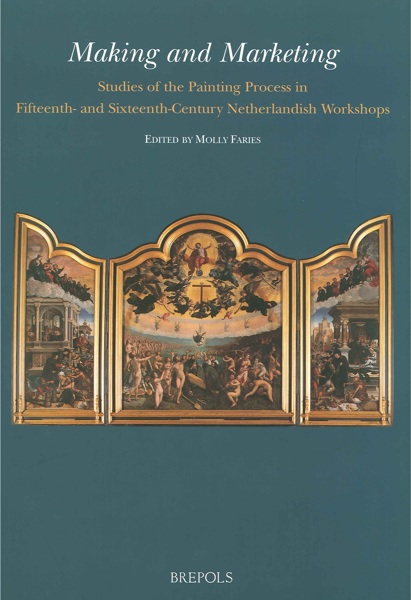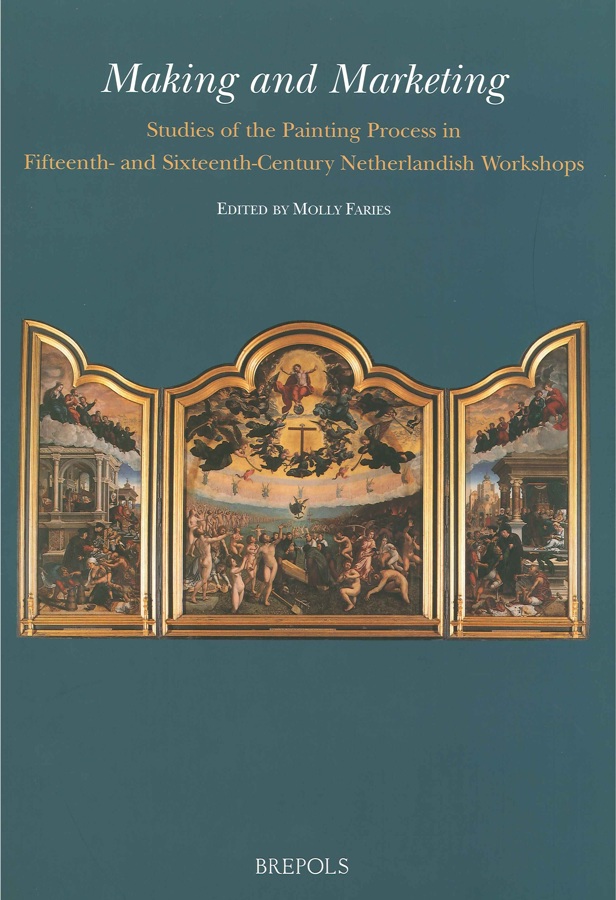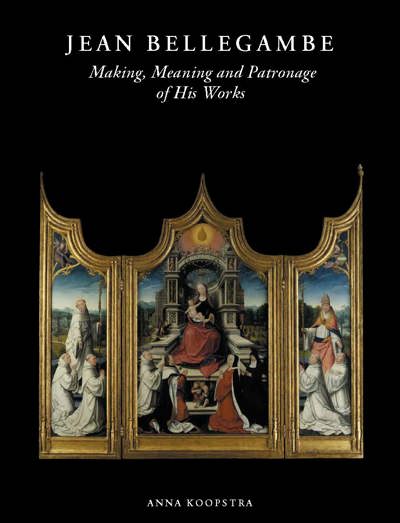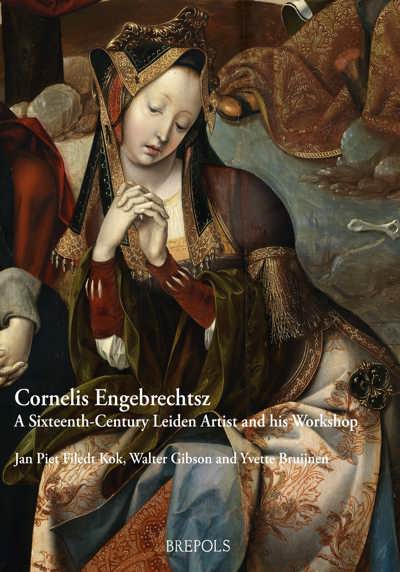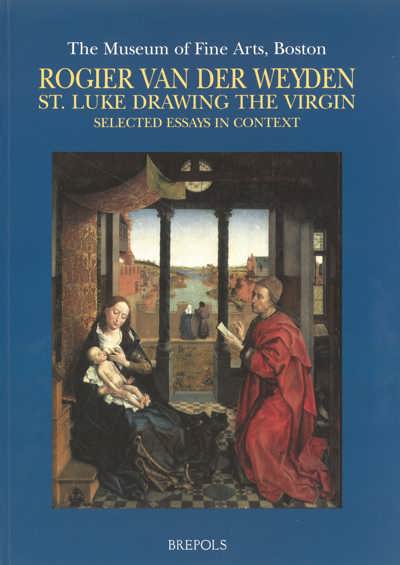
Making and Marketing: Studies of the Painting Process in Fifteenth- and Sixteenth-Century Netherlandish Workshops
Molly Faries (ed)
- Pages: 279 p.
- Size:210 x 297 mm
- Illustrations:149 b/w, 45 col.
- Language(s):English
- Publication Year:2006
- € 85,00 EXCL. VAT RETAIL PRICE
- ISBN: 978-2-503-51605-9
- Paperback
- Available
- € 85,00 EXCL. VAT RETAIL PRICE
- ISBN: 978-2-503-53814-3
- E-book
- Available
"Much more than just another volume of “technical studies,” Making and Marketing makes a significant contribution to our expanding knowledge about the painting processes followed by Netherlandish artists, and to our understanding of late Medieval and Renaissance workshop practice." (Nancy E. Zinn, in: HNA Review of Books)
Table of Contents:
Molly Faries, ‘Making and Marketing: Studies of the Painting Process’;
Micha Leeflang, ‘The Saint Reinhold Altarpiece by Joos van Cleve and his Workshop: New Insights into Albrecht Dürer’s Influence on the Working Process’;
Ron Spronk and Catharina van Daalen, ‘Two Scenes from the Passion at the Harvard Art Museums: a Tale of Two Antwerp Workshops?’;
Daantje Meuwissen, ‘A Painter in Black and White: the Symbiotic Relationship between the Paintings and Woodcuts of Jacob Cornelisz. van Oostsanen’;
Anne H. van Buren, ‘Collaboration in Manuscripts’;
Maryan Ainsworth, ‘Romanism as a Catalyst for Change in Bernard Van Orley’s Workshop Practices’;
Linda Jansen, ‘Shop Collaboration in the Painting of Background Landscapes in the Workshop of Pieter Coecke van Aelst’;
H. Verougstraete and R. Van Schoute, ‘Copies, Pastiches, and Forgeries after Bosch’;
Margreet Wolters, ‘Creativity and Efficiency: Joachim Beuckelaer’s Use of Patterns and Models’;
Maria Galassi, ‘Jan Massys and Artistic Relationships between Antwerp and Genoa during the Sixteenth Century’;
Liesbeth Helmus, ‘Journeymen and Servants: Sixteenth-century Employment Contracts with Painters from the Netherlands’;
Maximiliaan P.J. Martens and Natasja Peeters, ‘Artists by Numbers: Quantifying Artists’ Trades in Sixteenth-century Antwerp’
